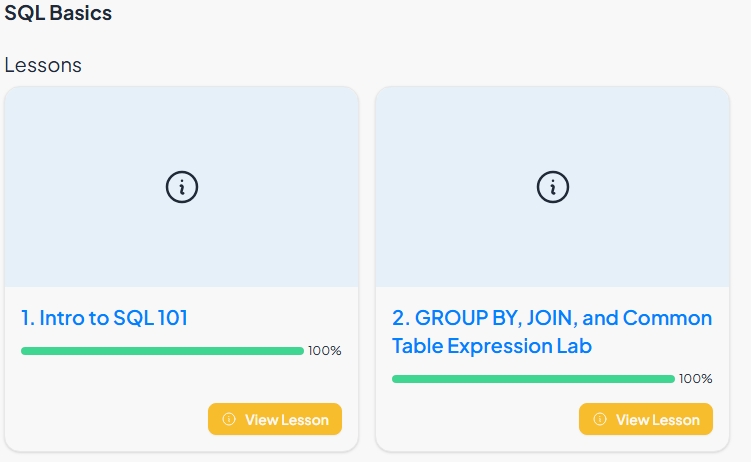Beginner DE Bootcamp: SQL Basics
I’ve just started Zac’s beginner data engineering bootcamp on dataexpert.io, and I’m making notes as I explore each module. The course is a great introduction to foundational data engineering concepts that every aspiring data engineer should know. Below is a quick rundown of what I’ve learned so far.
Database Overview
The bootcamp uses a sample NBA database that contains multiple tables of player and game data.
This is a great real-world dataset because it’s large, has relationships across tables, and makes the queries more engaging.
Some of the key tables include:
nba_player_seasons
Contains season-level statistics for each player, such as points, rebounds, assists, and personal info like age and college.nba_games
Stores high-level game information such as game ID, date, season, and teams playing.nba_game_details
Includes player-level stats for each game (points, rebounds, minutes played, etc.)
Basic Queries: SELECT, FROM, WHERE
The most basic SQL query starts with SELECT (columns) and FROM (table). You can limit rows and filter with WHERE.
1
2
3
4
5
6
7
8
9
10
11
12
13
14
15
-- All columns, limited rows
SELECT *
FROM bootcamp.nba_player_seasons
LIMIT 50;
-- Players aged 40 or older
SELECT player_name, age, team, college
FROM bootcamp.nba_player_seasons
WHERE age >= 40;
-- Players aged 40+ who played college ball in Florida
SELECT player_name, age, team, college
FROM bootcamp.nba_player_seasons
WHERE age >= 40
AND college = 'Florida';
Aggregation for Insights
Aggregation functions help summarize data:
- COUNT(*) — number of rows
- AVG(column) — average
- SUM(column) — total
- ARRAY_AGG(DISTINCT column) — array of unique values
Use GROUP BY to compute these per group. Example: per country, show count of players, average points, total rebounds, and list players.
1
2
3
4
5
6
7
8
9
SELECT
country,
COUNT(*) AS player_count,
AVG(pts) AS avg_points,
SUM(reb) AS total_rebounds,
ARRAY_AGG(DISTINCT player_name) AS players
FROM bootcamp.nba_player_seasons
GROUP BY country
ORDER BY player_count DESC;
Joining Tables
Real-world data spans tables. Use joins to connect them. Here we join game details with games on game_id to bring stats together with metadata.
1
2
3
4
5
6
7
8
9
10
11
SELECT
d.player_name,
d.team_id,
d.pts,
g.game_date,
g.season
FROM bootcamp.nba_game_details AS d
JOIN bootcamp.nba_games AS g
ON d.game_id = g.game_id
WHERE g.season = 2020
LIMIT 100;
Queries with CTEs
Common Table Expressions (CTEs) let you structure complex queries into readable steps. Example with two CTEs—one deduping details and one deduping games—then joining and summarizing for a specific player.
1
2
3
4
5
6
7
8
9
10
11
12
13
14
15
16
17
18
19
20
21
WITH
deduped_details AS (
SELECT DISTINCT game_id, player_id, player_name, team_id, pts
FROM bootcamp.nba_game_details
),
deduped_games AS (
SELECT DISTINCT game_id, game_date, season
FROM bootcamp.nba_games
)
SELECT
dd.player_name,
dg.season,
SUM(dd.pts) AS total_points,
COUNT(DISTINCT dd.game_id) AS games_played,
ARRAY_AGG(dg.game_date ORDER BY dg.game_date) AS game_dates
FROM deduped_details dd
JOIN deduped_games dg
ON dd.game_id = dg.game_id
WHERE dd.player_name = 'LeBron James'
GROUP BY dd.player_name, dg.season
ORDER BY dg.season;
I’m excited to keep learning as the bootcamp dives into various data engineering related cocepts in the upcoming weeks
👉 Huge thanks to Zac Wilson for launching this free learning resource for aspiring data engineers!
